25 Cf. further evidence of price making the varying interest rates Richter discovered in Hamburg and Bohmbach in Braunschweig (Klaus Richter: Untersuchungen zur hamburger Wirtschafts – und Sozialgeschichte um 1300 unter besonderer Berücksichtigung der städtischen Rentengeschäfte 1291-1330 , Hamburg, H. Christians, 1971, p. 137; Jürgen Bohmbach: «Umfang und structur des Braunschweiger Rentenmarktes 1300-1350», Niedersächsisches Jahrbuch für Landesgeschichte , 41/42 (1969-1970), pp. 119-133, 131.
26 G. Clark: The Interest Rate , p. 5.
27 J. Zuijderduijn: Medieval capital markets , pp. 124-136.
28 See Avner Greif: «Institutions and impersonal exchange: from communal to individual responsibility», Journal of Institutional and Theoretical Economics , 158 (2002), pp. 168-204; idem: Institutions and the path to the modern economy: lessons from medieval trade , Cambridge, Cambridge University Press, 2006, pp. 309-313; Lars Boerner & Albrecht Ritschl: «Individual enforcement of collective liability in premodern Europe», Journal of institutional and theoretical economics , 158 (2002), pp. 205-213.
29 Piet Lourens & Jan Lucassen: Inwoneraantallen van Nederlandse steden, ca. 1300-1800 , Amsterdam, NEHA, 1997, pp. 112-113.
30 For instance, in 1449 Leiden had to pay out 686 annuities.
31 Accounts for the «round» years of 1450 and 1550 were not preserved.
32 Jaco Zuijderduijn: «De laatmiddeleeuwse crisis van de overheidsfinanciën en de financiële revolutie in Holland», Bijdragen en mededelingen betreffende de geschiedenis der Nederlanden-Low Countries Historical Review , 125-4 (2010), pp. 3-24.
33 James D. Tracy: A financial revolution in the Habsburg Netherlands. Renten and renteniers in the province of Holland, 1515-1565 , Berkeley / Los Angeles, University of California Press, 1985.
34 J. C. Van Loenen: De rentelast van Haarlem ; Eef C. Dijkhof: Goudse renten , unpublished manuscript available at the Streekarchief Midden-Holland; J. Zuijderduijn: Medieval capital markets , pp. 177-181.
35 Petrus Johannes Blok: Rekeningen der stad Groningen uit de 16de eeuw , The Hague, S Gravenhage, M. Nijhoff, 1896, pp. 205-215, 345-353.
36 The following is based on Jaco Zuijderduijn: «Village-indebtedness in Holland (15 th-16 thcenturies)», in Thijs Lambrecht & Phillipp R. Schofield (eds.): Credit and the Rural Economy in Europe, c. 1100-1850 , Turnhout, Brepols, 2010, pp. 39-62, 40-41. The only part of Holland not investigated was the country of Voorne and Putten. Furthermore some villages under the jurisdiction of powerful noblemen, and therefore exempt of taxation, do not appear in the source (Robert Fruin (ed.): Informacie up den staet faculteyt ende gelegentheyt van de steden ende dorpen van Hollant ende Vrieslant om daernae te reguleren de nyeuwe schiltaele gedaen in den jaere MDXIV , Leiden, Boekdr. von A.W. Sijthoff, 1866, pp. VI, XXVIII).
37 R. Fruin: Informacie up den staet faculteyt , pp. IX-X.
38 Both Van der Woude and Noordegraaf have used the data the Informacie provides (Adrianus Maria van der Woude: Het Noorderkwartier. Een regionaal historisch onderzoek in de demografische en economische geschiedenis van westelijk Nederland van de late middeleeuwen tot het begin van de negentiende eeuw , Wageningen, Veenman & Zonen, 1972; Leo Noordegraaf: Hollands welvaren? Levensstandaard in Holland 1450-1650 , Bergen, Octavo, 1985. Van Zanden used the informacie to come up with a national account of Holland for 1510-1514 (Jan Luiten van Zanden: «Taking the measure of the early modern economy: Historical national accounts for Holland in 1510-1514», European Review of Economic History , 6 (2002), pp. 131-163.
39 See for instance R. Fruin: Informacie up den staet faculteyt , pp. 149, 300. Hoppenbrouwers stressed the unreliability of the data on landed property in the informacie as well Peter C. M. Hoppenbrouwers, «Mapping an unexplored field. The Brenner debate and the case of Holland», in Peter C. M. Hoppenbrouwers & Jan Luiten van Zanden, Peasants into farmers? The transformation of rural economy and society in the Low Countries (middle ages-19 th century) in the light of the Brenner debate , Tournhout, Brepols, 2001, pp. 41-66, p. 44.
40 Cf. R. Fruin: Informacie up den staet faculteyt , pp. 512-513; L. M. VerLoren van Themaat et al. (eds.): Oude Dordtse lijfrenten , pp. 123-127. At the end of the 15 thcentury some towns made adjustments to annuities, to cope with arrears. This involved lowering the interest rate of annuities. The source does not take these adjustments into account; it offers an overview of the interest rates agreed upon when annuities were sold.
41 Noordwijk Archives, inv. nr. 291 (accounts of 1513 and 1516).
42 Jaco Zuijderduijn: «Het lichaam van het dorp. Publieke schuld op het Hollandse platteland rond 1500», Tijdschrift voor sociale en economische geschiedenis , 5 (2008), pp. 107-132, 118.
43 R. Fruin: Informacie up den staet faculteyt , p. 512.
44 Herman W. Dokkum & Eef C. Dijkhof: «Oude Dordtse lijfrenten», in Lambertus M. Ver-Loren van Themaat et al. (eds.): Oude Dordtse Lijfrenten. Stedelijke financiering in de vijftiende eeuw , Amsterdam, Verloren, 1983, pp. 37-90, 85-86.
45 «Seggen oock, dat, zoe zy niet gelooft en waeren meer renten up heurluyder dorp te vercoopen, zoe hebben zy upte huysen ende landen particulier gehaelt an losrenten 100 currente guldens tsjaers…» (R. Fruin: Informacie up den staet faculteyt , p. 234).
46 This pricing mechanism is best studied in: Timur Kuran & Jared Rubin: «The Financial Power of the Powerless: Socio-economic Status and Interest Rates under Partial Rule of Law», The Economic Journal , 128 (2016), pp. 758-796.
47 Jean Charles Naber: Een terugblik. Statistische bewerking van de resultaten van de informatie van 1514 , Haarlem, Stichting Contactcentrum voor regionale en plaatselijke geschiedbeoefening in Noord- en Zuid-Holland, 1970 (reprint of edition 1885), pp. 36-37.
48 Cf. the importance of trade relations for the institutional framework of capital markets Lance Davis: «The capital markets and industrial concentration. The US and UK, a comparative study», The Economic History Review 2 ndseries, XIX (1966), pp. 255-272, 256.
49 R. Fruin: Informacie up den staet faculteyt , pp. 164-165.
50 Cf. Oliver Volckart & Nikolaus Wolf: «Estimating Financial Integration in the Middle Ages: What Can We Learn from a TAR Model?», The Journal of Economic History , 66 (2006), pp. 122-139.
51 Cf. Larry Neal: The rise of financial capitalism. International capital markets in the Age of Reason , Cambridge, Cambridge University Press, 1990, p. 141.
52 This is also more or less why the bill of exchange did not become a major financial instrument. According to L. Neal: «this lending depended on the volume and intensity of commerce between any two cities. So it was limited to merchant bankers dealing in foreign trade, and to cities in close geographical proximity that were politically friendly» (Larry Neal: «How it all began: the monetary and financial architecture of Europe during the first global capital markets, 1648-1815», Financial History Review , 7 (2000), pp. 117-140, 118.
FIANZAS Y FIADORES EN EL SISTEMA FINANCIERO CASTELLANO A FINES DEL MEDIEVO: INSTITUCIONES GENERADORAS DE CONFIANZA *
David Carvajal de la Vega Universidad de Valladolid
A fines del Medievo la expansión de la economía, de los mercados, de los instrumentos y de las relaciones financieras era patente en buena parte del occidente europeo. 1 Durante la Baja Edad Media, el progresivo desarrollo del mundo financiero impulsó un complejo entramado de vínculos que permitió integrar el capital en ámbitos como el comercio, la fiscalidad o la deuda pública y privada; haciendo posible el desarrollo y la consolidación de diversos «sistemas financieros», entendiendo estos como el universo conectado formado por instrumentos, instituciones y mercados, operando en un lugar y en un tiempo dados. 2
Читать дальше
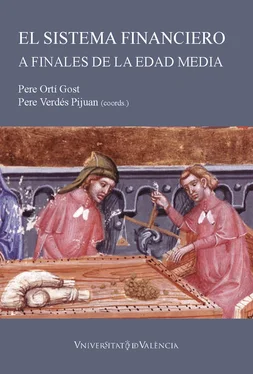
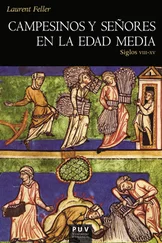
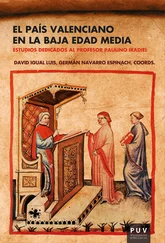
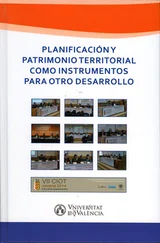
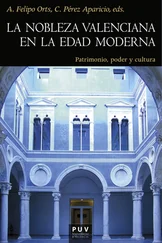

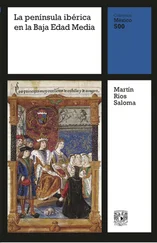



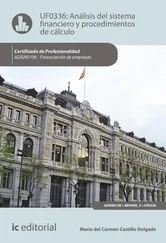
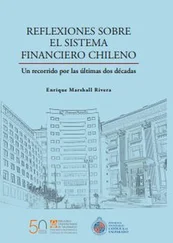
![Rafael Gumucio - La edad media [1988-1998]](/books/597614/rafael-gumucio-la-edad-media-1988-1998-thumb.webp)